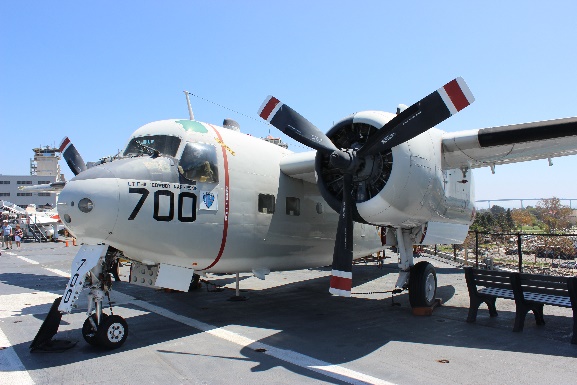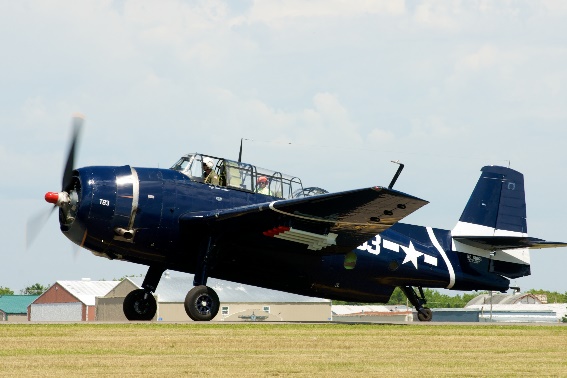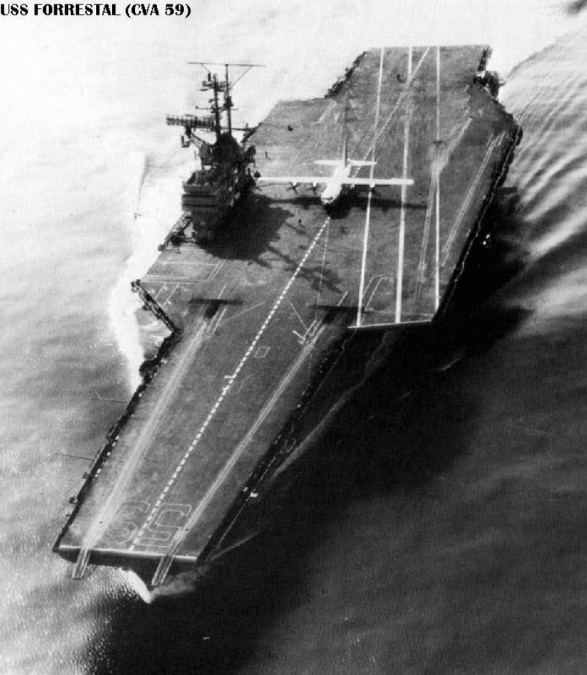History of the Carrier Onboard Delivery (COD)
The Grumman Lineage
Figure 1. Source US Navy
by Sean Sims
Carrier Onboard Delivery, commonly referred to as COD, is the process of delivering personnel, mail, supplies and more to an aircraft carrier. The United States Navy currently relies on the workhorse Grumman C-2 Greyhound which has held the COD role since 1965. The Greyhound is a derivative of the world famous Grumman E-2 Hawkeye (a purpose built electronic warfare aircraft). The Greyhound, with a widened fuselage, can carry up to 26 passengers, 10,000 pounds of cargo or a mixture of both for up to 1,300 nautical miles.
Figure 2. Source Steve Straiton via Flickr under CC License
Prior to the Greyhound, COD duties were fulfilled by the Grumman C-1 Trader. The Trader is also a derivative aircraft, pulling it’s lineage from the Grumman S-2 Tracker which was the first purpose built anti-submarine warfare aircraft. The Tracker was also modified to provide the E-1 Tracer, the first purpose built airborne early warning aircraft, which was ultimately replaced by the E-2 Hawkeye.
The Trader entered service as the TF-1 in January 1955 and was redesignated the C-1A in 1962. It provided the ability to carry 9 passengers, 3,500 pounds of cargo or a mixture of both for up to 1,100 nautical miles. When the Trader was retired in 1988 it was the 2nd to last radial engine powered aircraft used by the Navy.
Figure 3. Source Pete Markham via Flickr under CC License
The first aircraft to be formally assigned the COD role was the Grumman TBM-3R Avenger. The Avenger entered service in 1942 as a torpedo bomber. In an interesting turn of events, Grumman opened a new manufacturing plant and revealed the Avenger to the public on December 7th, 1941. The event was overshadowed by the Japanese attack on Pearl Harbor. Grumman delivered 100 aircraft to the Navy in June 1942. The TBM-3R variant was first used operationally in July 1951 off the coast of Korea. The Avenger was modified to carry 6 passengers by removing the rear gun turret, adding seats between the turret and pilot, and adding seats in the lower rear section of the aircraft. Additionally, the torpedo bay was converted to carry up to 3,000 pounds of cargo up to 1,000 nautical miles.
Prior to the Avenger, the Navy utilized the aircraft it had to transport items and personnel to/from the carrier. An extra seat or a bomb bay were utilized to transport the necessary cargo.
Attempts to Dethrone Grumman
There have also been several notable non-Grumman aircraft that have been tested for the COD role. Most notably, in 1963, the United States Marine Corps lent a Lockheed KC-130 Hercules to the United States Naval Testing Center. The Naval Testing Center took that Hercules and completed numerous touch and gos followed by 21 unarrested landings and unassisted (without catapult assistance) takeoffs from the deck of the USS Forrestal (CV-59).
Figure 4. Source US Navy
The Hercules, aptly named “Look Ma, No Hook”, was tested with cargo load outs varying from 85,000 up to 121,000 pounds. The manufacturer modified the aircraft with a smaller nose landing gear opening and an improved anti-skid braking system. The underwing refueling pods were also removed.
At 85,000 pounds, the Hercules came to a stop in a mind-boggling 267 feet of the Forrestal’s 1,046 foot flight deck. Even at the maximum payload (121,000 pounds), the Hercules used only 745 feet of flight deck for takeoff and 460 feet for landing. To accommodate the aircraft’s 132 foot 7 inch wingspan a special line was painted down the middle of the deck. This allowed the starboard wingtip to clear the Forrestal’s island by just under 15 feet!
The Naval Testing Center determined that the optimal specifications would be for the Hercules to carry 25,000 pounds with a range of 2,100 nautical miles.
Three other aircraft were tested throughout the formal COD timeline. The Navy very briefly experimented with a modified AD-5 Skyraider. The fuselage was widened allowing for a total of 4 seating positions. They also partnered with the Fokker Aircraft Corporation to test the Fokker F-28 in 1983. The testers indicated the F-28 provided the cargo capacity of the Grumman C-2 Greyhound with the range of the Lockheed S-3 Viking.
Figure 5. Source US Navy
The Navy originally tested using the Lockheed S-3 Viking in the COD role during the 1970s. Lockheed modified the aircraft to carry 6 passengers plus cargo pods (called blivets) on the external pylons. The Viking brought a 2,400 nautical mile range to the table with the added benefit of in-flight refueling capability. The major downside was that the Viking was incapable of transporting large items such as jet engines.
In the 1980s Lockheed proposed a highly modified version of the Viking known as the US-3A. This version had a wider and longer fuselage with seating up to 30 passengers or internal cargo space for up to two large jet engines. The Navy balked at the idea and the US-3A never entered production. The Navy did however have Lockheed convert a handful of existing S-3 Vikings for the COD role.
End of an Era
Grumman’s reign as COD king is coming to an end. The Navy recently held trials for a Greyhound replacement. Grumman provided details of an upgraded C-2 and competed against the Bell Boeing V-22 Osprey and the Lockheed S-3 Viking for COD replacement. In February 2015 the Navy formally announced the selection of the Osprey as the next COD aircraft which will be known as the CMV-22B. Deliveries of the CMV-22B are expected to start in 2020 with the Greyhound retiring by 2024.
Figure 6. Source US Navy







